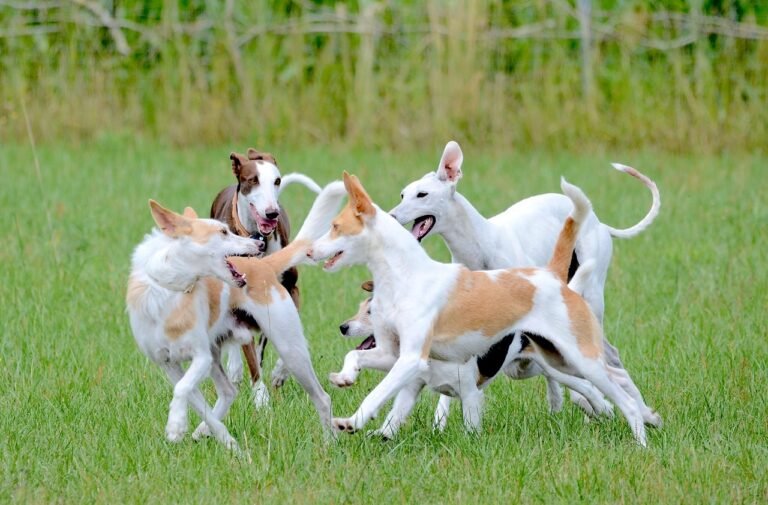Over the summer months, ensuring your dog stays safe in the heat is necessary for their well-being. High temperatures can pose serious risks to your furry friend, including heatstroke and dehydration. By taking a few simple precautions, you can protect your dog and help them enjoy the warm weather. In this guide, you’ll learn effective strategies to keep your dog cool and comfortable during those scorching summer days.
The Danger of Overheating: Symptoms and Risks
Overheating poses serious risks for your dog, leading to conditions such as heat exhaustion or heatstroke. These can escalate quickly into life-threatening situations, especially for certain breeds like Bulldogs and Pugs, who are more prone to respiratory distress due to their short snouts. Understanding the signs of heat-related illnesses can help you act swiftly, potentially saving your dog’s life.
Recognizing Signs of Heat Stress
Watch for excessive panting, drooling, weakness, or lethargy as indications that your dog may be suffering from heat stress. You may also notice a rapid heart rate or a lack of coordination in their movements. If you observe any such symptoms, it’s vital to move your dog to a cooler environment and offer water immediately.
Understanding Heatstroke in Dogs
Heatstroke occurs when your dog’s body temperature rises to dangerous levels, typically above 104°F (40°C). This can happen in just a few minutes, particularly on hot days or during vigorous exercise. Symptoms can escalate quickly, causing confusion, vomiting, and even loss of consciousness. Immediate intervention is necessary to prevent serious organ failure or death.
Recognizing heatstroke early can make all the difference. Once your dog’s body temperature exceeds 106°F (41°C), the risk of organ damage becomes significantly higher. Cooling your dog down gradually is important; using cool water or ice packs on their neck, armpits, and groin is effective. If your dog doesn’t respond quickly, or if their condition appears severe, seeking veterinary care cannot be overstated, as they may require intravenous fluids or additional treatments to recover. Pairing swift action with a thorough understanding of these heat-related dangers helps ensure your dog’s safety during the summer months.

The Essential Guidelines for Hydration
Keeping your dog hydrated during the summer months is imperative for their wellbeing. Dogs can easily become dehydrated, which can lead to serious heat-related illnesses. Ensuring that your furry friend has access to fresh, clean water at all times will help maintain their hydration levels and support their overall health. On particularly hot days, consider providing multiple water sources to encourage drinking and combat the summer heat.
Tips for Encouraging Water Intake
Encouraging your dog to drink more water can sometimes require a bit of creativity. Here are some effective tips to boost hydration:
- Offer fresh, cool water several times a day.
- Add ice cubes to their water bowl for a refreshing treat.
- Consider flavoring the water with a little low-sodium broth.
- Use a pet water fountain to pique their interest.
After trying these methods, keep an eye on your dog’s water intake to ensure they remain well-hydrated throughout the day.
The Importance of Ice Water and Hydration Stations
Providing ice-cold water can significantly enhance your dog’s hydration experience. Ice water not only cools them down but also encourages them to drink more, especially on hot days. Setting up hydration stations throughout your home and outdoor spaces ensures that your dog always has access to refreshing water. This proactive approach prevents overheating, supports their physical activity, and maintains their energy levels during warm weather. Make it a habit to check these stations frequently, so your dog’s water supply is always fresh and enticing for them to drink.
Safe Outdoor Activities: Timing and Environment
Timing and the environment are key factors in ensuring your dog’s safety during outdoor activities in the summer heat. Prioritizing the hours when temperatures are cooler can drastically improve your dog’s comfort and safety levels, helping you avoid unnecessary heat-related issues.
Best Times of Day for Walks and Play
Early mornings and late evenings provide the most enjoyable temperatures for walks and playtime. Aim for walks before 10 a.m. or after 6 p.m., when the sun is less intense. This not only protects your dog from overheating but also allows you to enjoy a more pleasant outdoor experience together.
Choosing Dog-Friendly Locations
Selecting locations that offer shade, grass or dirt surfaces, and water access can enhance your dog’s outdoor experience during the sweltering summer months. Avoid hot asphalt or sand, as these surfaces can cause paw burns and discomfort.
Finding dog-friendly parks or green spaces with ample shaded areas makes a significant difference. Search for dog parks or trails that provide trees, benches, and water stations. Many parks also have dog-friendly amenities, like splash pads or shaded seating areas, ensuring your furry friend remains comfortable while having fun. If you can’t find a nearby spot, consider bringing a portable water bowl or shade tent to create a safe environment wherever you go. Your diligence in choosing the right locations can lead to many enjoyable adventures together this summer.
Designing a Cool Living Space
Creating a comfortable environment for your dog during the summer heat can significantly enhance their well-being. Ensure that your home features areas where your furry friend can relax away from the heat. Keeping your living space cool involves strategic placement of your dog’s bed and access to shaded areas, particularly if your dog spends time outdoors. Incorporating cooling mats or fans can also contribute to a more comfortable atmosphere.
Temperature Control Strategies at Home
Temperature Control Strategies
| Use Air Conditioning | Set your AC to a comfortable temperature to keep the indoor space cool. |
| Ceiling Fans | Running ceiling fans can help circulate cool air, improving overall comfort. |
| Cooling Mats | Provide special cooling mats for your dog to rest on during the hottest part of the day. |
| Window Treatments | Invest in blackout curtains or reflective window films to reduce indoor temperatures. |
The Benefits of Shade and Ventilation
Shade and proper ventilation can significantly impact your dog’s comfort level. Allowing your dog to rest in shaded areas helps prevent overheating, while good airflow keeps the air fresh and comfortable. In outdoor spaces, consider using tarps or dog houses strategically placed in shaded areas for your dog to retreat to when temperatures soar.
Shaded environments not only lower the immediate temperature but also help curb the risk of heat-related illnesses. For instance, providing a shaded area that remains consistently out of direct sunlight can lead to a temperature drop of up to 20 degrees Fahrenheit. Additionally, ensuring good ventilation channels air throughout your living space prevents stagnant heat from accumulating, creating an optimal setting for relaxation. Consider using natural breezes by opening windows during cooler parts of the day or investing in automatic vents for continuous airflow. These simple adjustments can make a huge difference in how comfortable your dog feels during the sweltering summer months.
Protective Gear and Products for Summer Comfort
Keeping your dog comfortable and safe during the summer heat often requires additional protective gear and products. Several options are designed specifically for hot weather, ensuring your furry friend stays cool while enjoying outdoor activities. Consider investing in lightweight, breathable harnesses and booties that protect sensitive paws from scorching pavement. Additionally, look for specialized shaded gear like dog umbrellas or tents that provide relief from direct sunlight, making outdoor adventures more enjoyable for both of you.
Cooling Vests and Mats: Do They Work?
Cooling vests and mats are effective tools for managing your dog’s temperature in hot conditions. Made from materials that absorb water and promote evaporation, these products can provide refreshing relief as your dog wears the vest or lies on the mat. Many pet owners report noticeable improvements in their dog’s comfort level during outdoor activities, especially when they are engaged in strenuous play or long walks.
Safe Sunscreen Options for Your Dog
Just like humans, dogs can suffer from sunburn, particularly those with short or thin fur. Opt for pet-friendly sunscreen formulations that are free from harmful chemicals and fragrances. Look for products specifically designed for dogs, as some human sunscreens may contain ingredients that are toxic to pets. Always test a small patch of skin before applying it over larger areas to ensure your dog doesn’t have an adverse reaction.
When choosing a sunscreen for your dog, look for those with SPF 30 or higher and ensure it offers broad-spectrum protection. Zinc oxide and PABA are harmful for dogs, so avoid products with these ingredients. Brands like Epi-Pet offer dog-safe sunscreens that have been formulated to provide effective UV protection, allowing you to enjoy outdoor fun without the worry. Always reapply the sunscreen after swimming or heavy play to maintain protection levels.
To wrap up
On the whole, keeping your dog safe during the summer heat requires vigilance and proactive measures. Ensure your pet has access to plenty of fresh water, provide shaded areas, and avoid strenuous activities during peak temperatures. Regularly check the pavement for heat before walks, and consider using protective gear like booties or sunscreen for sensitive areas. By taking these precautions, you will help ensure a safe and enjoyable summer for your beloved furry friend.





